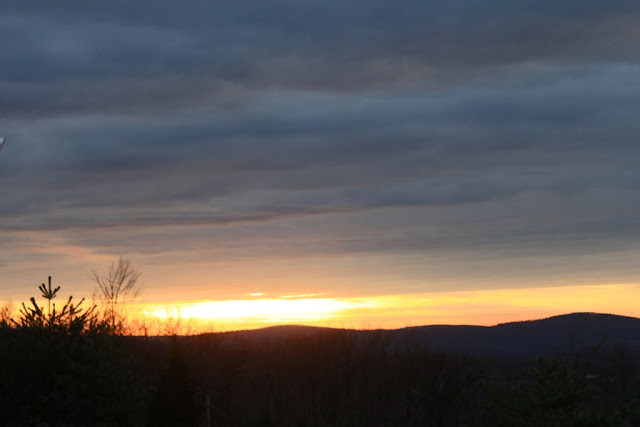December is a good time for sunrise and sunset photos. You need interesting cloud cover to make a good sunrise or sunset photo, and I guess Roundtop gets a lot of that in December. Last night I had a dusting of snow up on the mountain, and at dawn the clouds were still pretty thick, if already beginning to clear.
The landscape is starting to look more like winter now. It is cold, too, but not the bone-chilling mid-winter kind of cold. Still, it's got me thinking I should soon dig out my down parka, which is somewhere in the back of the closet.
The ski resort opened this morning, though only with a few slopes. People were already lining up when I left the mountain. The night time temperatures here just haven’t been cold enough yet to make a lot of snow. That will change after New Year’s, if the forecast is at all correct. The temperature will drop and the wind will rise. Well, what do I expect? It will be January.What will be different this year for me is that the ski resort is planning fireworks on New Year’s Eve. I will have a ringside seat for that, which should be fun. Usually, I don’t stay up to midnight, though I’m not infrequently awakened by the sound of fireworks from elsewhere, or even homegrown fireworks or gunshots. The dogs are quick to bark at any noise and their noise is more likely to awaken me than the shooting or fireworks themselves. I wonder what they will think of fireworks? It won’t be long before I find out the answer to that one.

























































